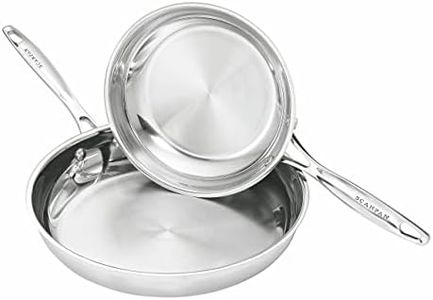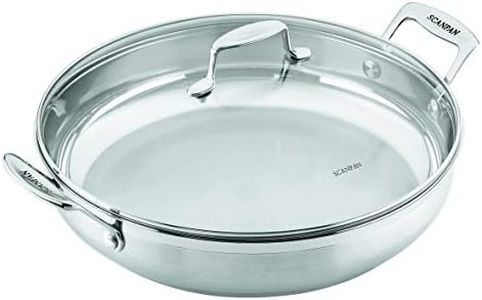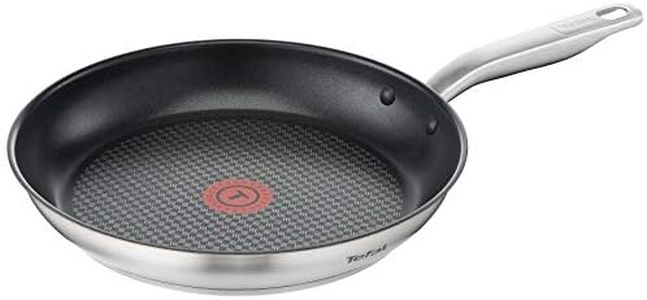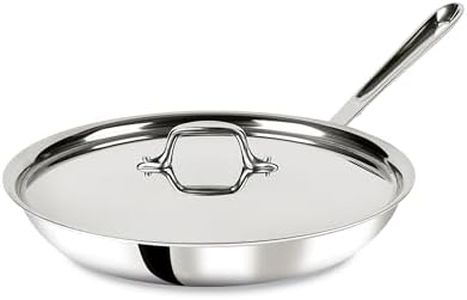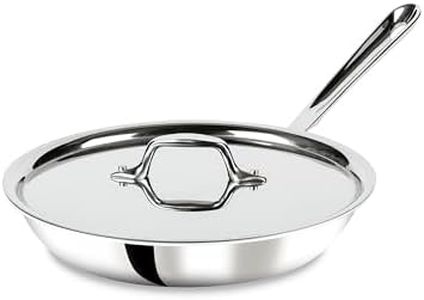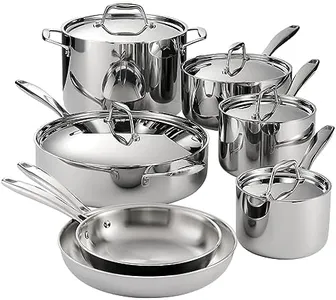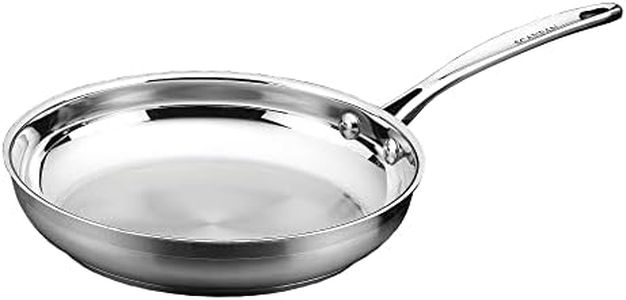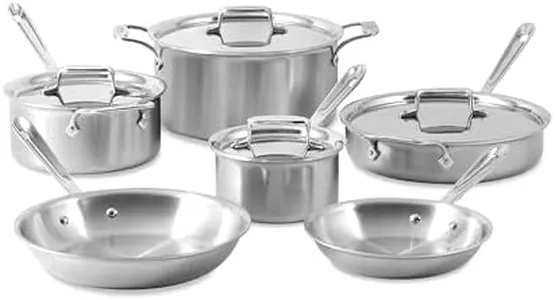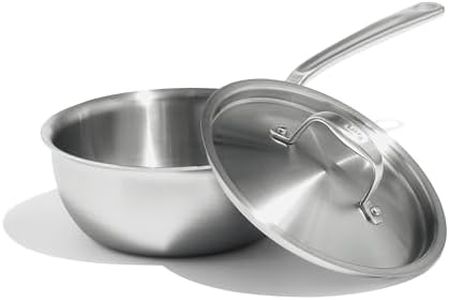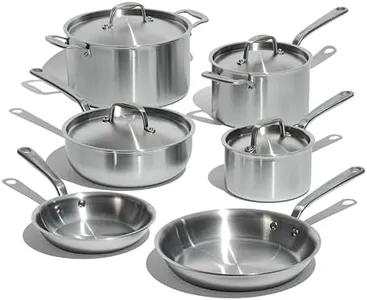We Use CookiesWe use cookies to enhance the security, performance,
functionality and for analytical and promotional activities. By continuing to browse this site you
are agreeing to our privacy policy
10 Best Stainless Steel Pans
From leading brands and best sellers available on the web.By clicking on a link to a third party's website, log data is shared with that third party.
Buying Guide for the Best Stainless Steel Pans
Choosing the right stainless steel pan can make a big difference in your cooking experience, whether you're a beginner or an avid home chef. Stainless steel pans are prized for their durability, versatility, and resistance to rust or staining. However, not all stainless steel pans are created equal; various features affect how they perform, feel, and last over time. Understanding the key specifications will help you select one that fits your cooking style and needs, and ensures your investment stands up to daily use.Type of Stainless SteelThe grade or type of stainless steel used in the pan determines its resistance to rust and reaction to food. Commonly, pans are marked as 18/10, 18/8, or 18/0, where these numbers refer to the percentage of chromium and nickel. 18/10 offers excellent resistance to corrosion and a shiny appearance, making it ideal for most users. 18/8 is quite similar but slightly less durable, while 18/0 lacks nickel and is less corrosion resistant but may be preferable if you have nickel allergies. The right type for you depends on your sensitivity to nickel, but for most people, 18/10 or 18/8 is a reliable choice for everyday cooking.
Ply ConstructionThis term refers to how many layers of metal are fused together to form the pan, usually described as 3-ply, 5-ply, or even higher. The most common are 3-ply (stainless steel inside and out, with an aluminum core) and 5-ply (with additional layers for better heat distribution). More layers mean even heating and fewer hot spots, which helps prevent burning. If you cook delicate sauces or want maximum control, a 5-ply might be best; if you stick to regular home cooking, 3-ply offers excellent performance at a lighter weight.
Weight and ThicknessThe heft of a stainless steel pan affects how it cooks and how easy it is to handle. Thicker, heavier pans hold heat better and provide more even cooking, but are also heavier to lift and maneuver. Lighter pans are easier to handle but may heat unevenly or warp over high heat. Consider your physical comfort and the types of food you cook most: if you sauté or toss food often, a lighter pan might suit you, whereas for searing meats or simmering sauces, a thicker, heavier pan is ideal.
Handle Design and AttachmentA pan’s handle affects both comfort and safety. Look for handles that stay cool, are comfortable to grip, and are securely attached, often with rivets or welding. Riveted handles are very sturdy but can be a bit harder to clean, while welded handles offer a smoother inside surface. If you have small hands or less wrist strength, ergonomic, slightly curved handles will offer better control. Choose the handle style that you can grip comfortably for the length of your usual cooking tasks.
Lid Type and FitSome pans come with lids, which help in simmering, braising, or keeping food warm. Lids can be stainless steel or glass. Stainless steel lids are durable and oven-safe, while glass lids let you monitor your food but are breakable. A good lid should fit snugly to trap moisture and heat. If you often cook dishes that require covered simmering, a well-fitting lid is important; otherwise, it may not be a must-have for you.
Compatibility with CooktopsNot all stainless steel pans work on every type of stove. Some require a magnetic base to be compatible with induction cooktops. Make sure to check if the pan is labeled as 'induction compatible' if you have an induction stove. All stainless steel pans work on gas and electric stoves. So, consider your primary cooktop when choosing a pan and ensure the base is flat and sturdy for stability and even heating.
Ease of CleaningWhile stainless steel is generally easy to clean and dishwasher safe, features like rolled edges and seamless interiors make hand-washing simpler. Some pans have a mirror finish that shows smudges more easily, while a brushed finish hides them. If you prefer quick cleanup and minimal fuss, look for dishwasher-safe options and designs that avoid hard-to-reach crevices.

